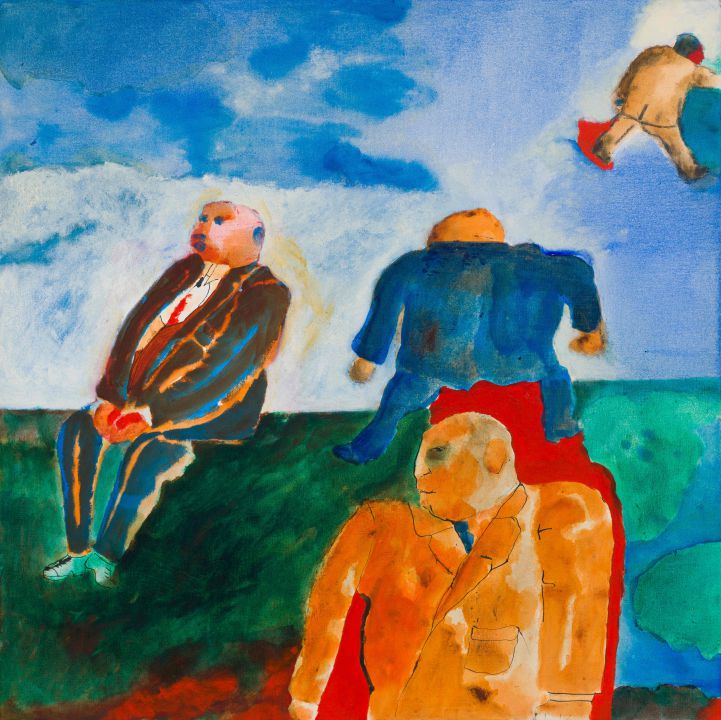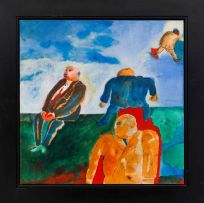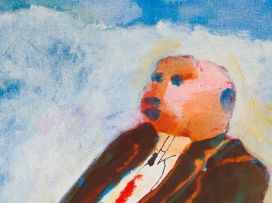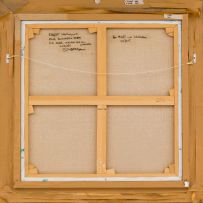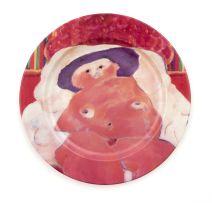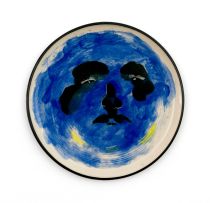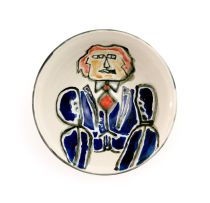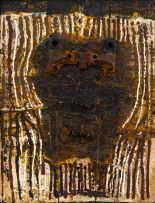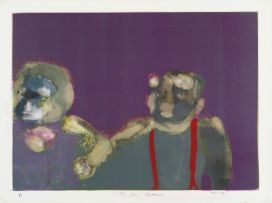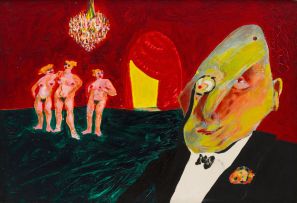Important South African and International Art
Live Auction, 12 November 2018
Evening Sale
Incl. Buyer's Premium & VAT
About this Item
Notes
The suit is a recurring wardrobe item in Robert Hodgins’s late-career paintings. Their wearers are now routinely interpreted as malevolent. This is an overly determined reading. ‘I look at these men in their suits, and I’m not sure,’ Hodgins said in 2008. ‘They could be criminal, or they could be – you know, they’re all victims of circumstance. I wouldn’t say I’m sorry for them, but I do faintly have enough of the dishonest in me to understand how they get there.’1
Hodgins’s awareness of the suit as a marker of social status has its origins in his biography. In his adolescence, Hodgins was a newsagent’s assistant in Soho, London, and delivered reading material to the area’s sartorial elite. But there is also an art historical thrust to his suited and booted figures. Hodgins was an unabashed fan of George Grosz, a German expressionist whose work was, on one level, an elucidation of the relationship between power and dress. ‘Grosz has been fascinating me for over 40 years,’ Hodgins told critic Ivor Powell in 1984, adding, ‘I’ve picked up certain qualities of Grosz.’2 An eye on masculine vanity was one of those qualities.
Notwithstanding the frequency with which he portrayed men in suits, Hodgins admitted to his uncertainty why. ‘I’ve been working with businessmen in suits,’ he told Powell in 1995. ‘Now what are those suits? Are they protection, are they coats of armour, are they camouflage, are they sexual devices to show they’re successful? What are those suits really?’3 A decade later, when he produced the present lot, his fascination with these questions remained. This lot is noteworthy for Hodgins’s unusual, almost Matisse-like treatment of space. He floats as much as places his four figures on a ground with a distinct sky and earth. The midline, a typical feature of Hodgins’s later work, here forms a horizon. There is the faintest echo of Matisse’s dancing celebrants about his composition, but modulated by Hodgins’s droll, knowing sensibility that men congregated in suits don’t dance.
Sean O’Toole
1 Kathryn Smith (2012). ‘Some General Rules: Roberts Hodgins in Conversation with Kathryn Smith’, in A Lasting Impression, Johannesburg: Wits University Press, page 122.
2 Ivor Powell (1984). ‘One of My Own Fragment: An Interview with Robert Hodgins’, De Arte, No. 31, September, page 42.
3 Ivor Powell (1994). ‘At the Scene of the Crime: An Interview with Robert Hodgins’, Ventilator, No. 1, September, page 46.
